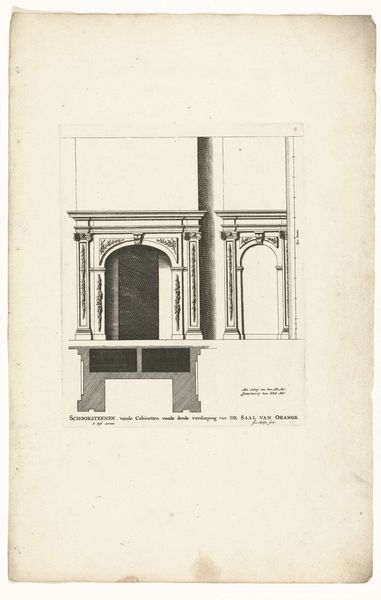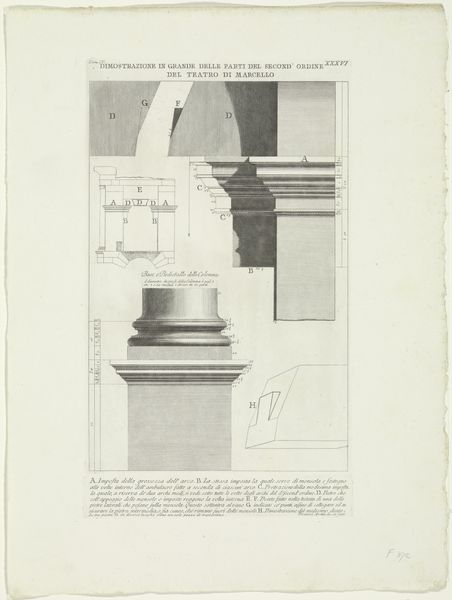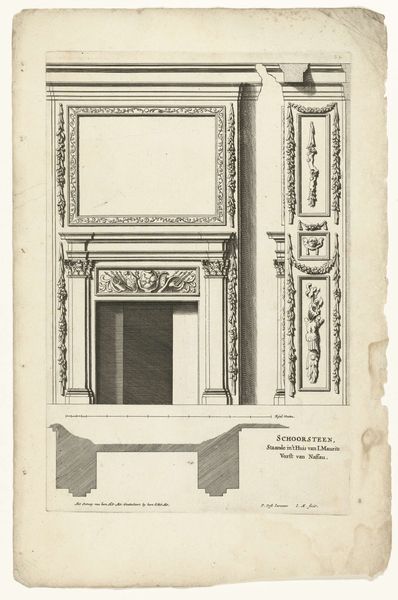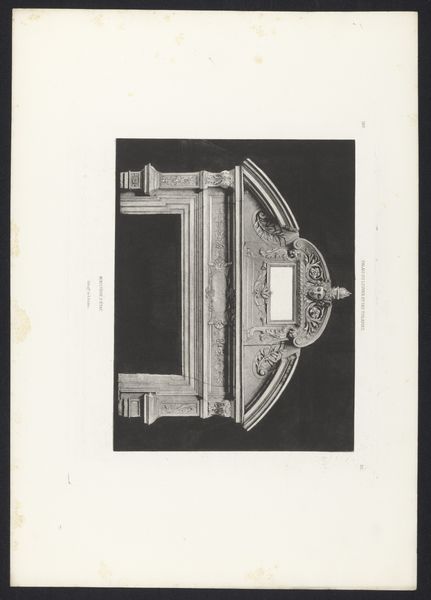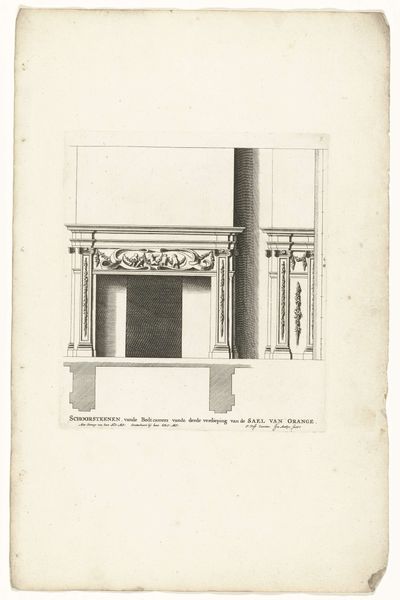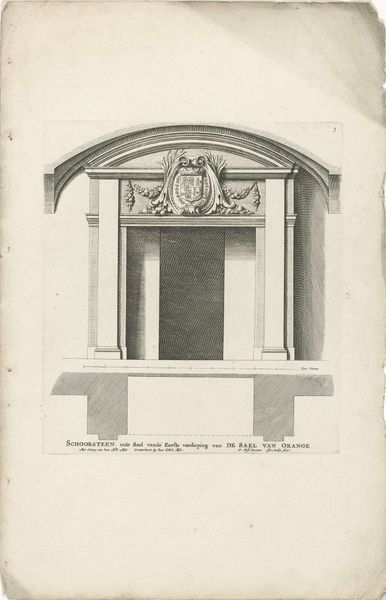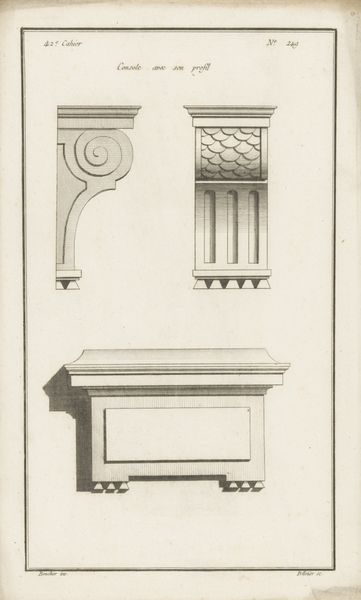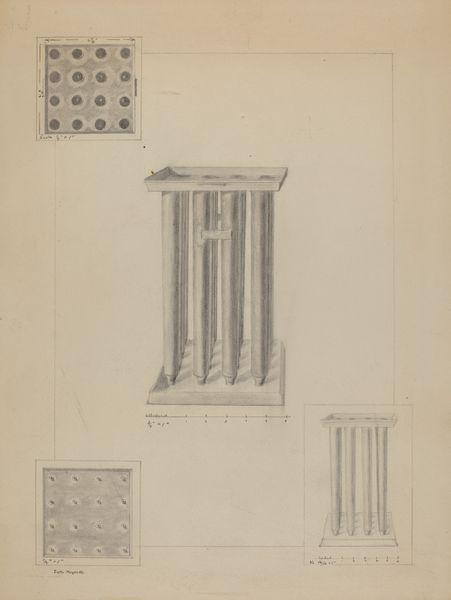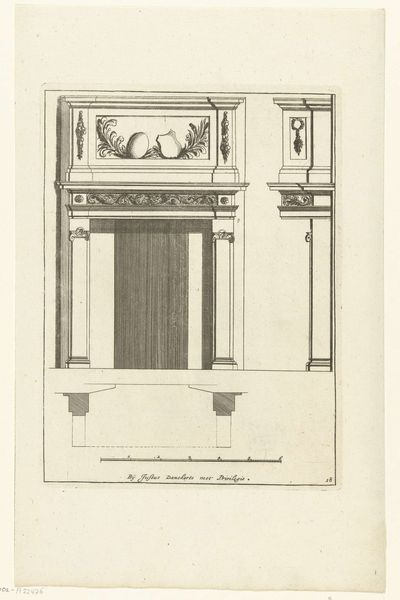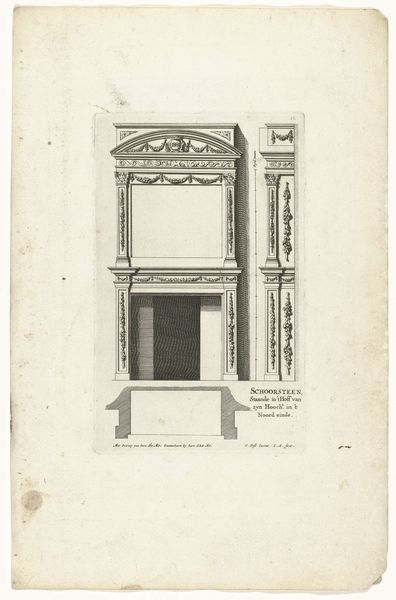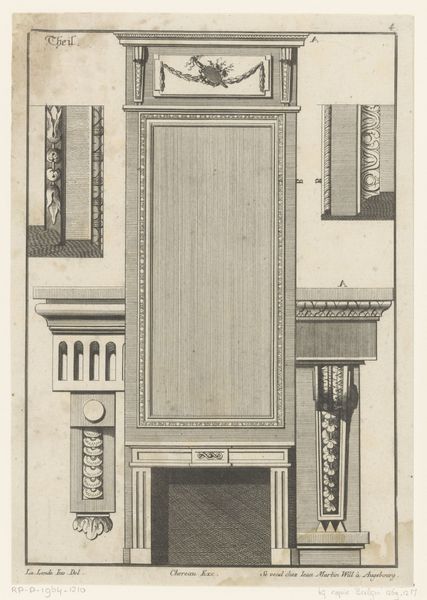
Details van de graftombe van de vrijgelatenen en slaafgemaakten van de familie van Augustus c. 1756 - 1757
0:00
0:00
girolamoiirossi
Rijksmuseum
drawing, print, etching, paper, engraving
#
drawing
# print
#
etching
#
classical-realism
#
paper
#
form
#
geometric
#
line
#
academic-art
#
engraving
Dimensions: height 490 mm, width 375 mm, height 38 mm, width 374 mm
Copyright: Rijks Museum: Open Domain
This print by Girolamo Rossi, made in Italy during the 18th century, depicts architectural details from the tomb of freedmen and slaves in the family of Augustus. The image’s precision and detail speaks to the Enlightenment’s fascination with classical antiquity. But it also reveals a social hierarchy deeply embedded in Roman society: the institution of slavery. The tomb itself, likely commissioned by a wealthy freedman, represents an attempt to negotiate social status and commemorate lives that were often marginalized. Rossi’s print, by focusing on the architectural elements, elevates these marginalized figures by connecting them to the grandeur of Roman imperial power. As art historians, we examine such images through the lens of their cultural context, researching the lives of freedmen and slaves in Roman society. By doing so, we can better understand how Rossi’s print both reflects and comments on the complex social dynamics of his own time. Art, after all, is never created in a vacuum; it's always a product of its social and institutional context.
Comments
No comments
Be the first to comment and join the conversation on the ultimate creative platform.
